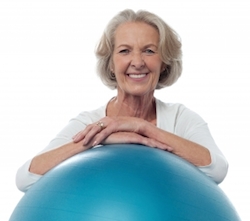Number of risky lifestyle factors is associated with an increased risk of some types of breast cancer
Women with risky lifestyle factors have an increased risk of breast cancer overall. According to a new Norwegian study [1], this association is limited to luminal-A like and luminal B-like HER2+ subtypes of breast cancer, as opposed to luminal B-like HER2–, HER2+ or triple-negative subtypes.

Previous studies have shown that alcohol, postmenopausal body mass index (BMI), and menopausal hormone therapy are risk factors for breast cancer, whereas physical activity is a protective factor for breast cancer. Smoking may not be a strong breast cancer risk factor, but it is strongly associated with other cancers, and thus must be considered a risky lifestyle behaviour.
Previous analyses from the Norwegian Breast Cancer Screening Program [2, 3] found that BMI, smoking, alcohol, physical activity, and menopausal hormone therapy were individually associated with breast cancer overall, but the magnitude of these associations varied markedly according to ER/PR/HER2-defined subtypes. The aim of this latest Norwegian study was to extend these analyses by examining the combined effect of these lifestyle factors on risk of breast cancer overall and by ER/ PR/HER2-defined subtypes.
The authors conducted a case–control subjects study nested within a cohort of women who participated in the Norwegian Breast Cancer Screening Program during 2006–2014 to examine associations between risky lifestyle factors and breast cancer risk. In all, 4402 breast cancer cases subjects with information on risk factors and hormone receptor status were identified. Conditional logistic regression was used to estimate odds ratios (ORs), with 95% confidence intervals (CIs), in relation to five risky lifestyle factors: body mass index (BMI) of 25 kg/m2 or greater, three or more glasses of alcoholic beverages per week, ever smoking, fewer than four hours of physical activity per week, and ever use of menopausal hormone therapy. Analyses were adjusted for education, age at menarche, number of pregnancies, and menopausal status. All statistical tests were two-sided.
The number of risky lifestyle behaviours were found to be positively associated with an almost twofold increase in breast cancer risk overall. The risk was particularly strong for luminal A–like and luminal B–like HER2-positive breast cancers. In contrast, no statistical significant associations between the number of risky lifestyle behaviours and HER2-positive and triple-negative breast cancers were found.
A limitation of the latest study was that the authors did not include information on food intake (i.e., plant foods, red and processed meat). Furthermore, women who attend screening might be more health conscious and have a healthier lifestyle than women who do not attend. This could have contributed to obliterating the protective effects of “healthy” habits. At the same time, women who attend screening are more likely to have their breast cancers detected. Thus, the picture becomes complicated with these potential biases.
The results suggest that by modifying risky lifestyle behavior, women could substantially reduce their breast cancer risk.
Reference
- Ellingjord-Dale M, Vos L, et al. Number of risky lifestyle behaviors and breast cancer risk. JNCI Cancer Spectrum 2018. doi: 10.1093/jncics/pky030.
- Ellingjord-Dale M, Vos L, et al. Parity, hormones and breast cancer subtypes – results from a large nested case-control study in a national screening program. Breast Cancer Reseach 2017; 19(1):10. doi: 10.1186/s13058-016-0798-x.
- Ellingjord-Dale M, Vos L, et al. Alcohol, physical activity, smoking, and breast cancer subtypes in a large, nested case-control study from the Norwegian Breast Cancer Screening Program. Cancer Epidemiology, Biomarkers & Prevention 2017; 26(12):1736-1744. doi: 10.1158/1055-9965.EPI-17-0611.
Keywords: risky lifestyle factors, body mass index, alcoholic beverages, smoking, physical inactivity, menopausal hormone therapy, breast cancer, molecular subtypes
2. 9. 2019 Institute of Biostatistics and Analyses at the Faculty of Medicine of the Masaryk University (IBA FM MU)



